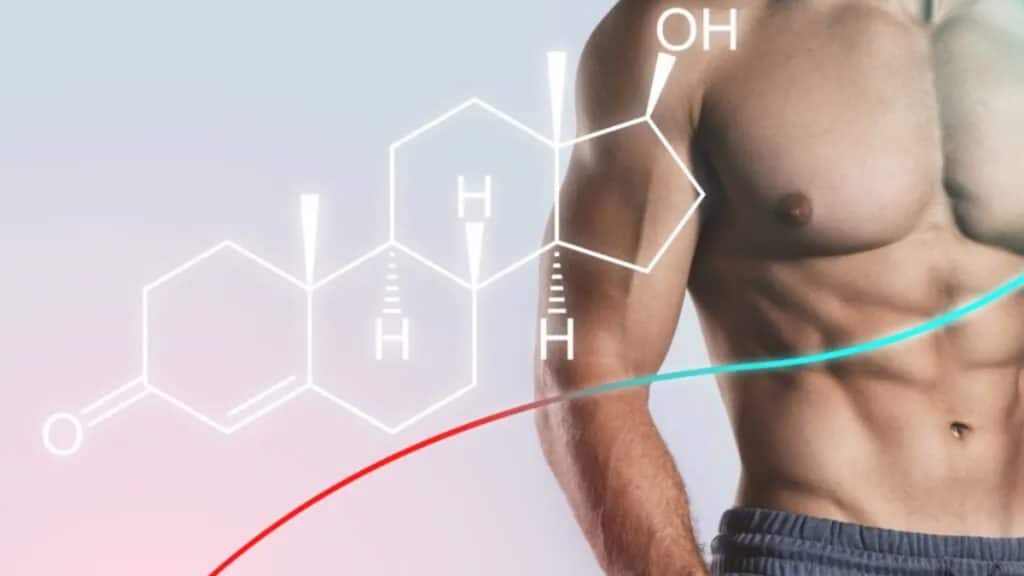If you’re considering testosterone replacement therapy (TRT) to address low testosterone levels, you might be wondering where and how can you get TRT in Canada.
Navigating the options for TRT can be challenging, especially with varying guidelines and requirements across provinces.
In this article, we’ll explore the avenues available to Canadians seeking TRT, including the types of providers, clinics, and online services that offer this treatment and what you need to know to get started.
Role of Testosterone in the Body
There is no denying testosterone’s significance for men’s health. It helps with sexual functioning, mood and energy regulation, and the development of bones and muscular mass.
The hormone helps produce red blood cells, which transport oxygen throughout the body.
Maintaining a balanced testosterone level is crucial for overall health. It dictates fat distribution and is instrumental in preserving lean muscle strength and mass.
Unfortunately, many men with hormonal imbalances or low testosterone typically face disruption in these functions, which could potentially lead to several health problems.
Symptoms of Low Testosterone
Men constantly defy a variety of health problems as their testosterone situations start to reduce. suggestions similar to frazzle, mood oscillations, and problems fastening can obstruct everyday conditioning.
Muscle mass shrinks while body fat grows, leading to visible physical alterations. Men might also observe a decrease in bone density, rendering them more prone to fractures.
Since testosterone plays a key role in sexual function, low levels can lead to issues getting or
keeping an erection as well as a decreased sex drive.
Despite getting enough sleep, sleep schedule disruptions can also cause insomnia or increased weariness. These symptoms impact mental and physical health.
Steps to Access TRT in Canada
To access TRT in Canada, start with an initial consultation at a men’s health clinic. Undergo hormone testing to evaluate your testosterone levels and determine eligibility for TRT.
Initial Consultation
Managing low testosterone levels starts with scheduling a TRT appointment. The first step is to make an appointment with a Canadian endocrinologist or men’s health specialist who specializes in andropause and hormonal imbalances.
At this visit, the doctor examines your symptoms, lifestyle, and previous medical records to properly diagnose your disease.
The expert then employs this information to assess whether you may qualify for testosterone replacement therapy (TRT).
Hormone Testing
Hormone testing provides important information for evaluating an individual’s hormonal balance and qualification for testosterone replacement therapy (TRT).
Selecting the Appropriate TRT Method
When selecting the best TRT technique, it’s crucial to weigh your alternatives and speak with a men’s health expert. The chosen technique may use injections, patches, gels, or pellets of testosterone.
Before making this choice, it’s crucial to consider lifestyle, convenience, dosage flexibility, and possible adverse effects.
Finding the best TRT technique for a patient’s needs requires discussing the benefits and drawbacks of each choice with a healthcare professional.
Monitoring and Adjustments
Following the selection of an appropriate TRT technique, ongoing observation and modification are essential.
Regular visits to your men’s health specialist allow you to monitor your development and hormone levels.
Through these meetings, the therapy can be adjusted as needed to meet your unique needs and maintain its effectiveness.
A blood work analysis will measure testosterone levels during these follow-ups. Based on the findings, the dosage or mode of TRT delivery may be modified.
Managing TRT Costs and Insurance
For patients receiving testosterone replacement treatment, controlling insurance and TRT expenses is essential. Even if the financial part seems difficult, it’s important to consider your possibilities.
Speaking with your provider can help reduce the financial strain as many private insurance policies pay some of the costs associated with TRT.
Certain TRT components are covered by the public health systems of some Canadian provinces.
Investigating these options could greatly lower out-of-pocket costs and increase accessibility to TRT.
Comprehending the intricacies of insurance coverage and obtaining aid from competent experts can streamline the procedure and reduce needless expenses.
Benefits of Testosterone Replacement Therapy
Men with proven hypogonadism (low testosterone levels) may benefit from testosterone replacement therapy (TRT). Here are a few possible advantages:
Physical Benefits:
- Enhanced strength and muscular mass: Testosterone is essential for muscle growth and maintenance. TRT can enhance strength and lean muscle mass, particularly when paired with consistent exercise.
- Increased bone density: By preserving bone mineral density, testosterone lowers the risk of osteoporosis and fractures.
- Enhanced sexual function: TRT can improve libido, erectile function, and overall sexual satisfaction. Enhanced vitality: A lot of guys who have low testosterone levels say they feel exhausted and unmotivated. TRT has the potential to increase vitality and energy levels.
- Improved mood: Low testosterone levels can make mood issues like hopelessness and irritation worse. TRT can improve mood and reduce symptoms of depression.
Important Considerations:
- Enhanced vitality: A lot of guys who have low testosterone levels say they feel exhausted and unmotivated. TRT has the potential to increase vitality and energy levels.
- Improved mood: Low testosterone levels can make mood issues like hopelessness and irritation worse. TRT can improve mood and reduce symptoms of depression.
- Possible Side Effects: Acne, an elevated risk of blood clots, an enlarged prostate, and sleep apnea are among the possible side effects of TRT. Discussing the possible advantages and disadvantages with your physician is crucial.
To find out if TRT is right for you, consult with a healthcare provider if you’re dealing with low testosterone symptoms like erectile dysfunction, lethargy, or diminished libido.
Final Thoughts
A preliminary consultation and hormone testing are necessary to determine eligibility for TRT in Canada.
Men’s health clinics and professionals can help choose the best TRT technique. Successful therapy requires addressing expenses and securing insurance coverage.
Improved physical health and well-being are two potential benefits of TRT, highlighting its importance for people experiencing low testosterone symptoms.
A comprehensive strategy to men’s health care must also take into account TRT’s accessibility in different provinces.
